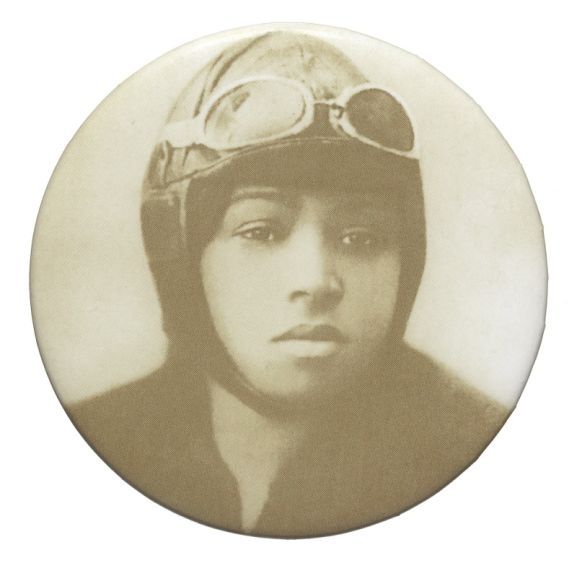
It would be difficult to find a more appropriate book to help celebrate both the Women of Aviation Worldwide Week, and International Women’s Day on the 8th of March.
This relatively small hard-backed publication, with just over 230 pages, is a little gem box of a book. Containing ‘26 Stories of Pioneer Flights, Daring Missions, and Record-Setting Journeys’, it is indeed a celebration of the dramatic, pragmatic, and often hard fought for, achievements of women throughout the history of aviation. But there’s also a few more ‘hidden treasures’ to be found.
Set within a largely chronological format, the story of each woman contributes to one of the five parts of the book that are entitled ‘Pioneers of Aviation’, ‘The Golden Age of Flight’, ‘Wartime and Military Flying’, ‘All Part of the Job’ and ‘Making a Difference’. Within these sections, we read about Baroness de Laroche – the former actress who was the first women in the world to earn a pilot’s licence, and Beryl Markham – the first woman to across the Atlantic east to west. Then there’s Jacqueline Cochran – the first woman to ferry a bomber across the Atlantic, Wally Funk – the first female Air Safety Instructor for the FAA, and Ruth Nicolls who founded ‘Relief Wings’ as a flying ambulance.
Most sections also contain ‘inserts’ that cover a range of subjects such as ‘Barnstorming’, the ‘Whirly Girls’ and ‘Air Marking’, but much like appendices, these are probably best read at the end of each story. And every story concludes with a box that encourages the reader to ‘Learn More’ by supplying a list of related biographies, news articles and website addresses. Furthermore, there is an Index and a Glossary at the back, along with a Bibliography that is helpfully divided into books for children and adults. All of this ensures that this remarkable book would be an asset for almost any library, and certainly a very useful educational tool. However, as I mentioned earlier, there is much more.
On one hand, there are several timely reminders of the difficulties that so many of these women had to face. Apart from initially being told that it was ‘unseemly’ for females to even think of learning to fly, or that women in general were ‘too weak’, others were later denied employment opportunities simply because of the lack of ‘suitable’ bathroom facilities. Still others were informed that women pilots were “unnecessary and undesirable”, and that the public wouldn’t want to board an aeroplane if they knew the pilot was a woman.
On the other hand, there are the most incredible snippets that make reading this work a delight. For example, did you know that the first ‘manned’ balloon flight was done by a rabbit? Or that Fay Gillis White, a member of the Ninety Nines and the Caterpillar Club, owned a pet leopard called ‘Snooks’? (I personally wonder if it was named after Neta Snook, the woman who taught Amelia Earhart how to fly). Another fascinating fact is that after mastering the art of refuelling whilst in flight, Bobbi Trout celebrated her 25th birthday mid-air, with a cake that was delivered via a rope from another aeroplane.
One final piece that I found particularly poignant, relates to the International Forest of Friendship, which contains 900 granite plaques honouring great names in aviation, and a ‘Moon Tree’ grown from a seed that travelled with the astronauts on Apollo 14. It seems to me to stand as a symbol of just how far humanity has come, and how far we yet may go.
I therefore think it is fair to say that ‘Women Aviators’ is a recommended read if you are looking for a book that is full of both information and inspiration.


Image credits
Title: A circular pinback button featuring a sepia portrait of the aviator Bessie Coleman. The portrait is the one used on her aviation license issued by the Federation Aeronautique Internationale.
Author: National Museum of African American History and Culture Collection
Source: https://www.si.edu/object/nmaahc_2011.159.3.53
Licence: CC0 Public Domain
Title: Amelia Earhart’s Lockheed Vega 5B
Author: Smithsonian National Air and Space Museum
Source: https://www.si.edu/object/nasm_A19670093000
License: CC0 Public Domain





